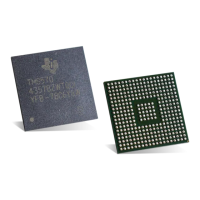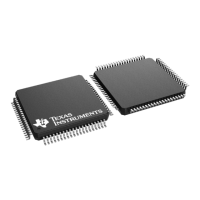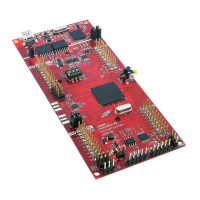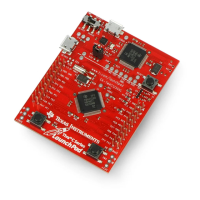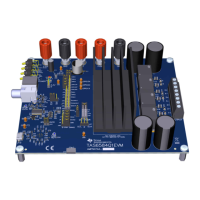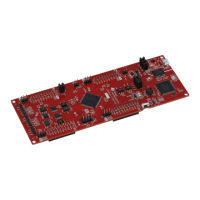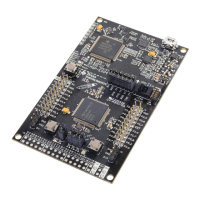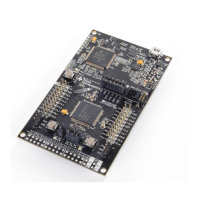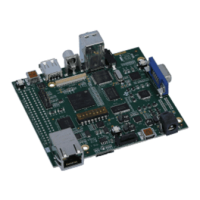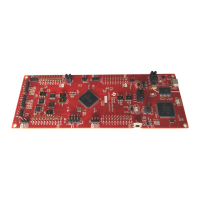4
TMS570LS0714
SPNS226E –JUNE 2013–REVISED NOVEMBER 2016
www.ti.com
Submit Documentation Feedback
Product Folder Links: TMS570LS0714
Device Overview Copyright © 2013–2016, Texas Instruments Incorporated
The device has multiple communication interfaces: three MibSPIs; two SPIs; two SCIs, one of which can
be used as LIN; up to three DCANs; and one I2C module. The SPI provides a convenient method of serial
interaction for high-speed communications between similar shift-register type devices. The LIN supports
the Local Interconnect standard 2.0 and can be used as a UART in full-duplex mode using the standard
Non-Return-to-Zero (NRZ) format. The DCAN supports the CAN 2.0B protocol standard and uses a serial,
multimaster communication protocol that efficiently supports distributed real-time control with robust
communication rates of up to 1 Mbps. The DCAN is ideal for applications operating in noisy and harsh
environments (for example, automotive and industrial fields) that require reliable serial communication or
multiplexed wiring.
The I2C module is a multimaster communication module providing an interface between the
microcontroller and an I
2
C-compatible device through the I
2
C serial bus. The I2C module supports speeds
of 100 and 400 kbps.
A Frequency-Modulated Phase-Locked Loop (FMPLL) clock module is used to multiply the external
frequency reference to a higher frequency for internal use. The FMPLL provides one of the six possible
clock source inputs to the Global Clock Module (GCM). The GCM manages the mapping between the
available clock sources and the device clock domains.
The device also has an external clock prescaler (ECP) circuit that when enabled, outputs a continuous
external clock on the ECLK terminal. The ECLK frequency is a user-programmable ratio of the peripheral
interface clock (VCLK) frequency. This low-frequency output can be monitored externally as an indicator of
the device operating frequency.
The Direct Memory Access (DMA) controller has 16 channels, 32 peripheral requests,
and parity protection on its memory. An MPU is built into the DMA to protect memory against erroneous
transfers.
The Error Signaling Module (ESM) monitors device errors and determines whether an interrupt or external
error signal (nERROR) is asserted when a fault is detected. The nERROR terminal can be monitored
externally as an indicator of a fault condition in the microcontroller.
With integrated functional safety features and a wide choice of communication and control peripherals, the
TMS570LS0714 device is an ideal solution for high-performance, real-time control applications with safety-
critical requirements.
(1) For more information, see Section 10, Mechanical Packaging and Orderable Information.
Device Information
(1)
PART NUMBER PACKAGE BODY SIZE
TMS570LS0714PGE LQFP (144) 20.0 mm × 20.0 mm
TMS570LS0714PZ LQFP (100) 14.0 mm × 14.0 mm

